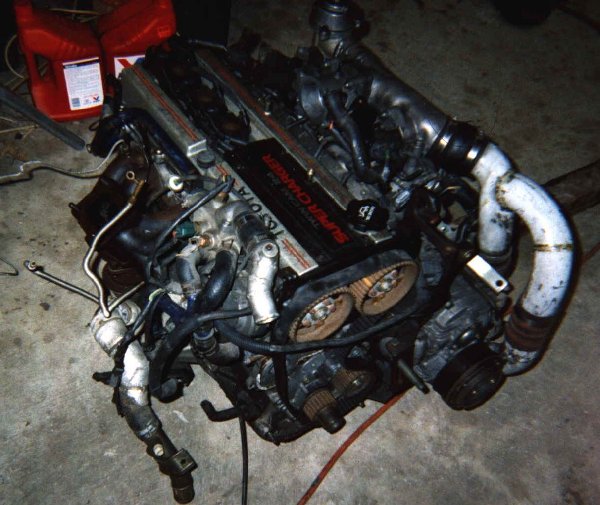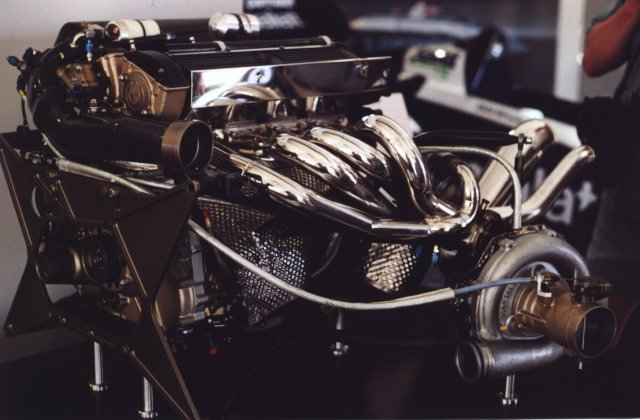An idle thought, could you have a turbo geared to a supercharger type drive with a clutch so it is driven at all speeds and eliminate lag?
Accepting that lag in not that much of an issue these days but as an alternative to triple turbo arrangements.
An idle thought, could you have a turbo geared to a supercharger type drive with a clutch so it is driven at all speeds and eliminate lag?
Accepting that lag in not that much of an issue these days but as an alternative to triple turbo arrangements.
http://en.wikipedia.org/wiki/Turbo-compound_engine
> http://en.wikipedia.org/wiki/Turbo-compound_engine
So the Super Constellation had one, LOL, that’s the Qantas aircraft from 1958 that pioneered its overseas service.
I really hate turbo lag in cars, so the idea of an electrically operated version appeals to me.
mollwollfumble said:
I really hate turbo lag in cars, so the idea of an electrically operated version appeals to me.
You probably mean you hate boost threshold, which virtually everyone incorrectly calls turbo lag.
Turbo lag is the time taken for the boost to stabilise to the new power setting after a power change and on anything halfway modern that’s only going to be less than maybe half a second.
Boost threshold is the rpm at which the turbo starts to really wake up and makes boost. A good example of this is my Subaru WRX with the old engine Vs the new engine.
The old 2.0 litres engine was mostly standard but had a larger exhaust, bigger intercooler, an add-on computer to the factory ECU to get more boost (16 psi), with everything else fairly standard. It would have no boost at all up to about 2600 rpm at which point you could hear the turbo rapidly spool-up and then it would something like double in power and away you’d go. If I got caught needing a bit of speed in a hurry (gap in traffic, etc) and I didn’t have at least 2,500 rpm up, I’d have to quickly go down a gear or two, to get the power I needed.
The new engine is 2.5 litres, has a slightly larger turbo, aftermarket ECU, ported cylinder heads, and most importantly a 4.5 kg flywheel. This combination pretty much eliminates any boost threshold; I can accelerate quite nicely from as little as 1500 rpm and there’s no rapid increase in power as the turbo is matched to the engine far better and the lightweight flywheel helps the engine accelerate much better. (though it’s not as nice to get going from a standing start as the factory 10 kg flywheel)
It now also make about double the power of the original factory WRX engine (should be about 300 kW after the final tune Vs the original 155 kW) and also uses less fuel.
Another good example of boost threshold is a mate of mines Toyota Supra. It’s got a 3.0 litre engine but a HUGE turbo on it and very little happens below about 4,500 rpm.
But when you have that many revs you have terrifying amount of power to play with – It’s up near 700 hp at the wheels.
!FWIW I’ve thought a fair bit about how to reduce the problem of turbos not making boost at lower revs.
I’d considered using something like a geared-up drive from the front pulley of the engine to run a Sprag clutch on the compressor shaft of the turbo but you need a hell of a gearing-up to make it worthwhile as a large turbo needs something like 30,000 rpm to really start working so you’d need a good 1:15 or so ratio. Lots of mechanical drag/friction in that.
I also looked at using a large model aircraft electric motor to do the same thing. It’d work but the power requirements are substantial.
I looked at having a tank of compressed air to blow into the turbo compressor but again it’s quite complex, heavy, and takes up a lot of space.
I used to own this engine -


It was a Toyota 1GG-ZE two litre six cylinder engine that was supercharged from the factory but in an effort to get more power down-low whoever owned it before me added a turbo to it as well. (not fitted in those photos) So at lower revs the supercharger would make all the boost then at some point the turbo would start to make more boost and a little one-way valve in the inlet system would start to move and the turbo would then start to dominate the airflow into the engine.
Again, complex and clumsy.
If you are allowed to, by far the best way is to simply make the engine as big in capacity as you can and use a reasonably-sized turbo. Oh, and a light flywheel.
FWIW perhaps the most extreme were the Formula One engines of the mid 1980’s.

That’s the BMW 1.5 litre and it ended up having the most power of the lot – a good 1200 hp. The problem was that, as Nikky Lauda described, they weren’t nice to drive – “You’d drive around the corners as fast as you could without having any power, then point the car at the next corner with the throttle open and hang on. The engine would go from 100 hp in the corner to over 1,000 hp.”
They’d sometimes spin the tyres in 6th gear.